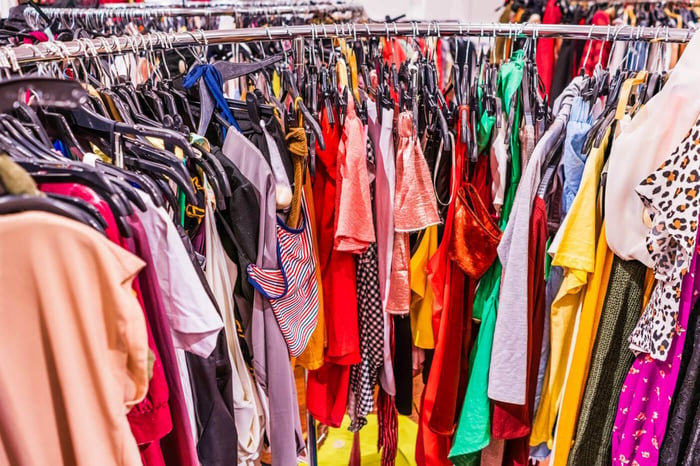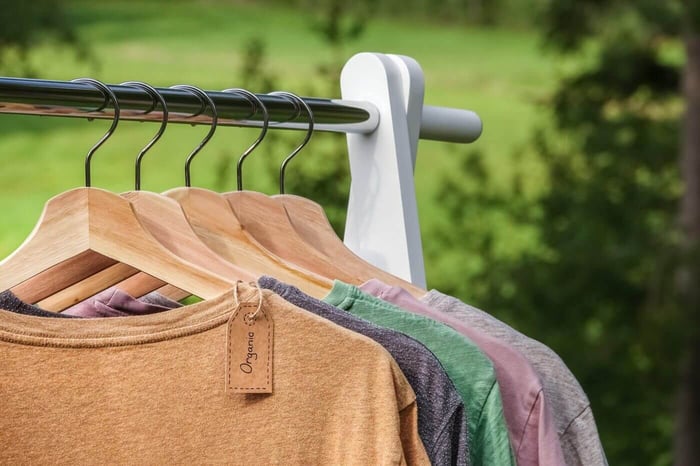 Have you ever considered becoming a sustainable designer? Sustainability has become an increasingly important topic in recent years, as people have become more aware of the impact that humans are having on the environment. In order to address this issue, we need to make changes at both the individual and collective levels. One way to do this is by designing products and systems that are more sustainable.
Have you ever considered becoming a sustainable designer? Sustainability has become an increasingly important topic in recent years, as people have become more aware of the impact that humans are having on the environment. In order to address this issue, we need to make changes at both the individual and collective levels. One way to do this is by designing products and systems that are more sustainable.
Sustainable design is about creating products and designs that have a minimal negative impact on the environment. This can be achieved through the use of sustainable materials, energy-efficient production methods, and recyclable or biodegradable packaging. Sustainable design is also about creating products that will have a long lifespan and can be easily repaired or recycled.
Sustainable design is not just about creating environmentally friendly products; it’s also about creating products that are socially and economically sustainable. This means taking into account the needs of all stakeholders, including users, producers, and society as a whole.
Attention: Use discount code "SHOP10" at checkout to save 10% on The Nori Press!
Becoming a Sustainable Designer
If you’re interested in becoming a sustainable designer, there are a few things you need to know. First, it’s important to have the right skills and knowledge. You need to be familiar with sustainable materials and production methods, and you should have a solid understanding of the principles of sustainable design.
It’s also important to have the right attitude. You need to be passionate about protecting the environment and committed to making sustainable choices in your own life. You also need to be willing to challenge yourself and push boundaries in order to create truly innovative sustainable designs.
The Challenges of Being a Sustainable Designer
The challenges of being a sustainable designer include finding ways to reduce the environmental impact of your designs, working with new and unfamiliar materials, and educating others about the importance of sustainability. However, these challenges also offer unique opportunities to make a positive difference in the world. If you are up for the challenge, then a career in sustainable design could be the perfect fit for you.
What is a Sustainable Designer?
As a sustainable designer, you are responsible for creating products and designs that have a minimal negative impact on the environment. This can be achieved through the use of sustainable materials, energy-efficient production methods, and recyclable or biodegradable packaging. Sustainable design is also about creating products that will have a long lifespan and can be easily repaired or recycled.
Being a sustainable designer is not just about having the right skills and knowledge; it’s also about having the right attitude. You need to be passionate about protecting the environment and committed to making sustainable choices in your own life. You also need to be willing to challenge yourself and push boundaries in order to create truly innovative sustainable designs.
The challenges of being a sustainable designer include finding ways to reduce the environmental impact of your designs, working with new and unfamiliar materials, and educating others about the importance of sustainability. However, these challenges also offer unique opportunities to make a positive difference in the world. If you are up for the challenge, then a career in sustainable design could be the perfect fit for you.
Practical Steps To Becoming a Sustainable Designer
If you want to become a sustainable designer, there are a few things you can do to get started. First, familiarize yourself with the principles of sustainable design. Next, learn about the different types of sustainable materials and energy-efficient production methods. Finally, try to find opportunities to put your new knowledge into practice. There are many online and offline resources that can help you get started on your journey to becoming a sustainable designer.
The most important thing you can do as a sustainable designer is to always be aware of the environmental impact of your products and designs. Every decision you make, from the materials you use to the packaging you design, can either help or hurt the environment. By making environmentally-conscious choices, you can help make a difference in the world.
If you’re interested in becoming a sustainable designer, there are a few challenges you may face. First, sustainable design is still a relatively new field, so there may not be as many job opportunities available. Additionally, sustainable designers often have to convince others of the importance of their work, which can be a challenge. However, if you’re passionate about making a difference, these challenges can be overcome.
There are several ways you can start down this path:
1. Start Your Own Business
If you'd like to start your own business, you could open a shop specializing in sustainable goods or services. Alternatively, you could sell items online through an eCommerce website. Either way, you would benefit from having your own company name and logo.
2. Work for a Company That Specializes in Sustainable Products
Another option is to work for a company that specializes in sustainable products. For example, if you're interested in working for a clothing manufacturer, you might consider applying for a job as a pattern maker. Pattern makers create patterns for garments based on design ideas and requests by designers.
3. Join a Professional Organization
Another option is to join a professional organization that focuses on sustainable design. For example, the American Society for Testing and Materials (ASTM) has a committee dedicated to sustainable design. The committee works to improve standards for sustainable design and provides information about what makes a product green.
4. Learn More About Green Design
You could look into green design courses. These classes teach students about sustainable design principles and provide them with practical experience. You could enroll in one of these courses at a community college or university. Or, you could attend a local high school or vocational program to earn a certificate or degree.
5. Take Online Courses
You could also pursue a certification in sustainable design. Certifications are often offered by universities, trade associations, and government agencies. Some certifications require a coursework component while others do not. However, most certifications include some type of exam.
6. Find a Mentor
You can also find someone who already practices sustainable design to mentor you. This person will help you identify the best opportunities for your career. He or she can also advise you on how to get started.
7. Network With Other Professionals
Lastly, you could network with other professionals who practice sustainable design. For example:
- Attend conferences where experts discuss sustainable design topics.
- Subscribe to newsletters related to sustainability.
- Contact companies that specialize in sustainable products.
- Ask your friends and family members if they know anyone who is practicing sustainable design.
What Skills and Knowledge Do You Need To Be a Successful Sustainable Designer?
To be successful as a sustainable designer, you need to have certain skills and knowledge. In addition to being knowledgeable about sustainable design, you should also possess strong communication skills. If you're able to effectively convey ideas to clients and colleagues, then you will be more likely to succeed in this field. Finally, you must have good organizational skills. Without proper planning, it can be difficult to manage multiple projects simultaneously.
To be a successful sustainable designer, you need to have a strong understanding of the principles of fashion design and sustainable design. You also need to be familiar with the different types of sustainable materials and energy-efficient production methods. Additionally, it’s important to be able to think creatively and come up with innovative solutions that are environmentally friendly. Also, you need to be able to communicate your ideas effectively to others.
Sustainable Design Resources
- The True Cost Documentary
- River Blue Documentary
- Conscious Chatter podcast
- Green Dreamer podcast
- Wardrobe Crisis podcast
- Crash Course Fashion podcast
- Clotheshorse podcast
- View all previous Conscious Style Podcast episodes
- Slow Factory Open Education
While there is no one-size-fits-all formula for becoming a sustainable designer, there are a few things you can do to increase your chances of success. First, familiarize yourself with the principles of sustainable design. Next, learn about the different types of sustainable materials and energy-efficient production methods. Finally, try to find opportunities to put your new knowledge into practice. By taking these steps, you’ll be well on your way to becoming a sustainable designer.
Why Sustainability Is Important in the Design Industry
Sustainability is important in the design industry because it helps protect the environment and future generations. By creating products and designs that are sustainable, we can reduce our environmental impact and help preserve our planet’s natural resources. Additionally, sustainable design is cost-effective and can help businesses save money in the long run. Finally, sustainable design is a growing trend, so those who are ahead of the curve will have a competitive advantage.
Start Practicing Sustainability
If you want to start practicing sustainability, here are some tips:
1. Choose Materials Wisely
When choosing materials for your next project, consider whether they are sustainable. For instance, when purchasing wood or paper products, look for sustainably sourced options. Also, make sure that any plastic or metal parts used in your product are recyclable or biodegradable.
2. Use Energy Efficient Production Methods
When designing products, you may choose to use less energy by using fewer lights, turning off appliances when not needed, and using timers instead of clocks. This will help conserve electricity and prevent waste from going to landfills.
3. Reduce Waste
Another way to reduce waste is to reuse items whenever possible.
4. Practice Greener Productivity
In order to become a better designer, you need to practice green productivity. There are many ways to go greener, such as reducing the number of meetings you attend, using online collaboration tools, and using email instead of phone calls.
5. Think Creatively About Your Designs
Finally, when thinking about how to create more sustainable designs, don’t limit yourself to traditional methods. Instead, experiment with new ideas such as 3D printing, laser cutting, and digital fabrication. These technologies allow designers to produce their own custom products without having to rely on mass manufacturing.
6. Learn More About Sustainability
There are many websites and organizations dedicated to helping people understand and implement sustainable practices. One good place to begin learning about sustainability is the United Nations Environment Programme (UNEP). You can also visit the Environmental Protection Agency (EPA) website to read up on what the EPA considers to be “green” products.
7. Join a Green Organization
Joining a green organization like the American Society of Interior Designers (ASID), which has chapters all over the world, can give you access to networking opportunities and educational events. Additionally, ASID offers certification programs that teach members how to incorporate sustainable design into their projects.
8. Become Certified
Certification is a great way to show clients and potential employers that you know how to work within a sustainable framework. If you’d like to get certified, there are several certifications available. Some examples include LEED (Leadership in Energy & Environmental Design) and ISO 14001.
9. Educate Yourself
Becoming educated about sustainable design helps you to develop a deeper understanding of the issues surrounding it. Read books, articles, and blogs to learn more about the topics discussed above.
10. Start Small
If you want to start implementing these tips today, try starting small. For example, replace a light bulb with a compact fluorescent lamp (CFL) or LED. Don’t worry too much about saving money; simply do something positive for the environment.
11. Share What You Know
Once you have started practicing some of these sustainable design tips, share your knowledge with others. Tell them about the benefits of recycling, and encourage them to recycle. Also, let them know about the importance of being environmentally friendly.
12. Get Involved With Local Organizations
Sustainable design is not only important in terms of environmental impact, but it also makes sense economically. By encouraging local businesses to adopt sustainable practices, we help our communities thrive.
13. Use Reusable Materials Whenever Possible
One of the easiest things you can do to reduce waste is to use reusable materials whenever possible. This includes items like straws, paper plates, cups, and napkins. When shopping at stores, look for places where they sell reusable bags, water bottles, and other eco-friendly supplies.
14. Reduce Your Carbon Footprint
In addition to using reusable materials, you can also reduce your carbon footprint by choosing energy-efficient appliances, heating systems, and lighting fixtures.
15. Recycle And Compost
Recycling and composting are two ways to conserve resources while reducing pollution. They both involve taking used materials and turning them into new ones.
16. Choose Eco-Friendly Products
When purchasing household goods, make sure that they are made from natural materials such as wood, wool, cotton, bamboo, hemp, and soy. These products will last longer than those made from petroleum-based plastics.
17. Buy From Local Businesses
Buying locally grown food is better for the environment because it reduces transportation costs. In addition, buying locally produced products means that less packaging was required during shipping.
18. Plant Trees
Planting trees is one of the most effective ways to combat climate change. Not only does planting trees reduce greenhouse gas emissions, but it also provides oxygen, cleans the air, and absorbs harmful pollutants.
19. Eat Organic Food
Organic foods require less energy to produce, which means they are less damaging to the environment. In addition, organic farms don’t use pesticides or synthetic fertilizers, which eliminates the need for toxic chemicals.
20. Shop At Farmers Markets
Farmers' markets provide a great way to buy fresh fruits and vegetables without paying exorbitant prices. Plus, farmers' market vendors tend to be more knowledgeable about what goes into their food.
21. Avoid Plastic Bags
The amount of plastic that ends up in landfills each year is staggering. Fortunately, there are many alternatives available when it comes to carrying groceries home. Paper bags are an easy option, but if you want something stronger, consider using cloth grocery sacks instead.
22. Wash Dishes Using Cold Water
Using cold water to wash dishes saves energy and prevents hot spots on the kitchen floor. If you have trouble finding cold water, try filling a bucket with ice and then adding tap water until it reaches room temperature.
23. Turn Off Lights
Turning off lights when you leave a room helps save electricity. You should also turn off any lights that aren’t needed. For example, leaving a light on in a bathroom is unnecessary since the room doesn’t get much traffic.
24. Repair Instead Of Replacing Old Appliances
Repairing old appliances rather than replacing them may not seem like a big deal, but it has a significant impact on the environment. According to the EPA, repairing appliances instead of replacing them could prevent over 1 billion pounds of waste from entering landfills every year.
25. Use Energy Efficient Light Bulbs
Energy-efficient bulbs use significantly less energy than standard bulbs and last longer too. Consider switching out all of your incandescent bulbs with compact fluorescent lamps (CFLs). CFLs cost around $5 per bulb, but they can last up to 10 years!
26. Recycle
If you live in an apartment building, recycling is essential. Most buildings have curbside recycling bins where residents can recycle paper, glass, metal, and plastic. However, if you live in a house, you must take these items to a local recycling center yourself.
27. Choose Reusable Shopping Bags
Reusable shopping bags help keep trash out of landfills by reducing the number of disposable bags used at stores. They are also convenient because you can carry them everywhere you go.
28. Buy Used Clothing And Shoes
Buying second-hand clothing and shoes reduces the demand for new production, which decreases pollution caused by manufacturing. Also, buying used clothes and shoes allows you to support small businesses while keeping money in circulation.
Attention: Use discount code "SHOP10" at checkout to save 10% on The Nori Press!
Benefits of Becoming a Sustainable Designer
1. You Can Help Make the World a Better Place
By becoming a sustainable designer, you can help improve the world around us. By making environmentally friendly decisions, you can help create a cleaner planet.
2. You Will Save Money On Energy Bills
Saving money on energy bills is always beneficial. When you start living sustainably, you may find yourself saving hundreds of dollars per month.
3. You Will Reduce Pollution
Reducing pollution is another benefit of being a sustainable designer. By choosing eco-friendly options, you can prevent toxins from entering our bodies and the surrounding environment.
4. You Will Live Longer
When you live sustainably, you’ll likely live longer than someone who isn’t doing so. The healthier you eat, the longer you will live.
5. You Will Get More Sleep
When you become a sustainable designer, you’ll no doubt notice that your sleep patterns improve. This is because you’ll feel more relaxed after making healthy choices.
6. You Will Feel Happier
If you care about the world around you, you’re going to feel happier. When you make sustainable design decisions, you’re helping others. That alone makes you happy!
7. Your Kids Are Going To Love You
Your kids are going to love you, even more.
8. You Will Become More Attractive
You’ll look better and feel better when you start making sustainable designs. People not only like to look good, but they also like to feel good about themselves. So, by creating inspiring sustainable designs, you’ll attract new friends and build new lasting relationships.
9. Better Decisions
When you start making sustainable design decisions. They’ll see how much you care about the world we live in and they’ll respect you all the more.
10. You Will Have More Fun
It takes less time to do things when you don’t waste resources. That means you’ll spend less time cleaning up and more time enjoying life.








